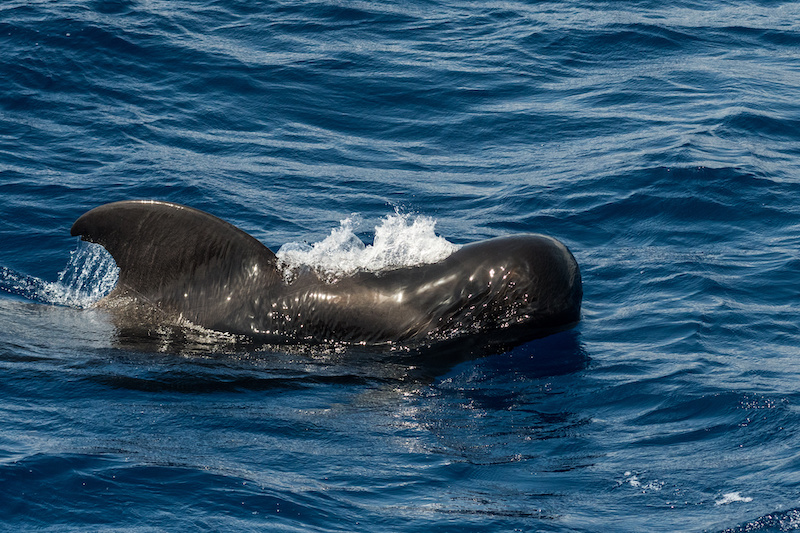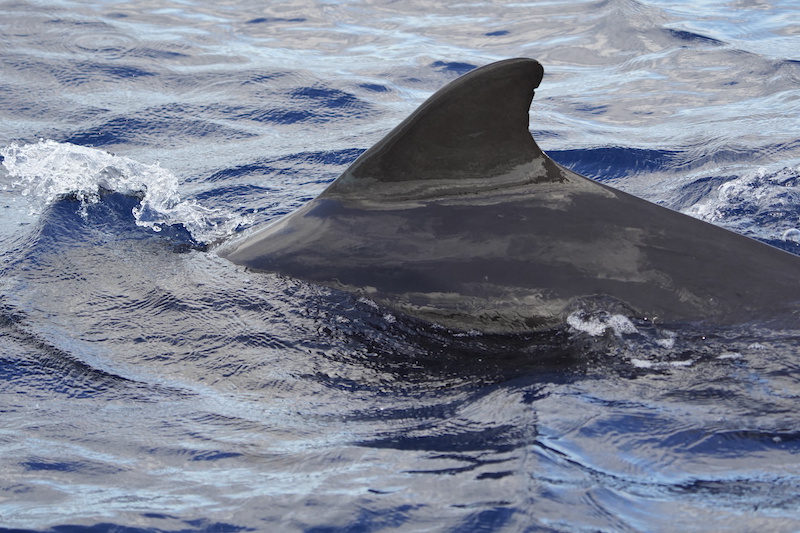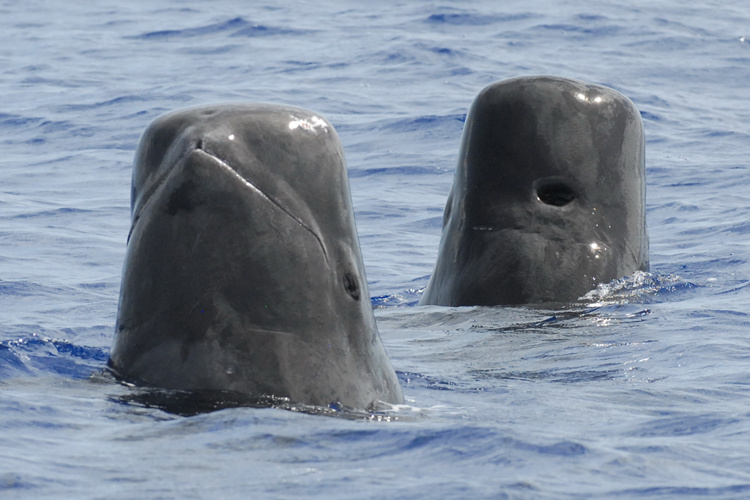
The Tropical Pilot Whale, a fascinating cetacean of the Caribbean waters, captures the attention of marine life enthusiasts. This article explores the unique characteristics of this species, its natural habitat, reproductive habits, and diet. Discover the mysteries of this marine mammal and the reasons why it sparks so much interest and curiosity.
Characteristics of the Tropical Pilot Whale
The Tropical Pilot Whale, or Globicephala macrorhynchus, is an intriguing cetacean species belonging to the Delphinidae family. These marine mammals are characterized by their color ranging from dark gray to black and their rounded dorsal fin, especially in males. As adults, they measure between 5 and 7 meters in length and can weigh up to 4 tons, making them among the largest members of their family. Their head is distinctively globular, without a discernible beak, a feature that sets them apart from other dolphins.
Adult males are distinguished by a sometimes square-shaped forehead overhanging their snout, while females have a less globular head. This morphological difference between sexes is quite rare among cetaceans. In terms of longevity, these animals can live up to 63 years, which is remarkable for their species. Their robust bodies and large size reflect their adaptation to a deep-sea lifestyle. Their dorsal fin, curved and broad at the base, varies with age and sex and is a key indicator for distinguishing them from other marine species.
Their skin is often marked with scars, reflecting their social interactions and active lifestyle. These characteristics, combined with their social behavior and specialized diet, make the tropical pilot whale a fascinating and important species in the marine ecosystem.

Habitat of the Tropical Pilot Whale
The tropical pilot whale, scientifically known as Globicephala macrorhynchus, primarily inhabits the tropical and temperate waters of the Indian, Pacific, and Atlantic Oceans. This cetacean species prefers deep marine areas, often located on the steep slopes of the continental shelf, where it finds an abundance of food. These marine mammals are adapted to life in deep waters, allowing them to dive to considerable depths for hunting.
Their presence is often reported near Fish Aggregating Devices (FADs), where they interact with other marine species and are sometimes observed by fishermen. Their habitat, characterized by relatively warm waters with surface temperatures of around 15 to 16 °C, is crucial for their lifestyle and feeding habits. This preference for deep waters underscores the importance of preserving these marine habitats to ensure the survival and prosperity of the tropical pilot whale.
Reproduction of the Tropical Pilot Whale
The reproduction of the tropical pilot whale, or Globicephala macrorhynchus, is a complex and extended process. Females reach sexual maturity around 8 to 9 years of age, while males join them a bit later, between 12 and 16 years. Gestation in this species lasts about 15 months, after which the female gives birth to a single calf. This relatively long reproductive cycle is characteristic of tropical pilot whales, with an interval of 3 to 5 years between births.
Young tropical pilot whales are nursed for 20 to 22 months, during which they develop essential skills for survival in the marine environment. The bonds between the mother and her calf are strong and enduring, often supported by other females in the group. Older females play a crucial role in the pod, contributing to the education and protection of the younger ones. This complex and matrilineal social structure is vital for the transmission of knowledge and skills within the species.
The reproduction of the tropical pilot whale, with its low reproductive rate and long nursing periods, emphasizes the importance of stability and protection of their environment to ensure the sustainability of the species.

Diet of the Tropical Pilot Whale (Globicephala macrorhynchus)
The diet of the tropical pilot whale is primarily focused on squid, which it hunts in the depths of the oceans. This preference for cephalopods indicates a remarkable adaptation to life in deep waters, where these prey are abundant. In addition to squid, the tropical pilot whale also consumes other types of mollusks as well as small fish, crustaceans, and krill, thus diversifying its diet.
Capable of deep and energetic dives, often up to 800 meters, the tropical pilot whale is an efficient hunter, using both speed and strength to capture its prey. These dives are typically done in groups, indicating a collective and coordinated hunting strategy. Their nocturnal feeding habits are adapted to the vertical migration of their prey, which rises to the surface during the night.
The diet of the tropical pilot whale plays a crucial role in balancing marine ecosystems. By regulating the populations of squid and other marine species, they contribute to maintaining the health of the oceans. This specialized diet also underscores the importance of preserving their natural habitats, essential for the availability of their food resources.
Discover all the species of cetaceans that can be found near the coasts of Martinique: